As they’re assembling their perfect team, many CEOs and founders wonder if hiring a technical writer will help them carry their company to success.
Unfortunately, a lot of them decide that having quality documentation to support their product just isn’t that high on their list of priorities and opt not to have a technical writer.
However, what they don’t understand is just how much technical writers bring to the table.
That’s a shame because these experts can improve and elevate almost any aspect of a business, and we’re here to show you how.
Read on and find out the vital role a technical writer can play in your company’s success.
Helping With Product Testing
The repercussions of releasing faulty software can be catastrophic.
In the US alone, the financial damage caused by low-quality software is measured in trillions of dollars, and it’s growing every year.

Source: Archbee
If that seems hard to believe, let’s look at just one example. In 2018, Nissan had to recall more than a million cars because of a bug in the software that affected the rear-view camera.

Source: Fox
The bug was minor—it allowed users to turn off the image the camera projected to the car’s screen, leaving it turned off the next time the car was put in reverse.
Still, this went against federal traffic regulations, so a recall needed to be made.
To avoid this kind of scenario, all software is thoroughly tested before it ever hits the market.
Testing procedures ensure that the software works as intended and that every action a user takes produces the desired results without causing problems or, in the worst case, a detrimental effect on users.
These tests happen in multiple phases, some automated and some manual, all with the goal of covering every angle and ensuring the software works in every situation.
Here is a handy graphic of the process to show you just how extensive software testing can be:
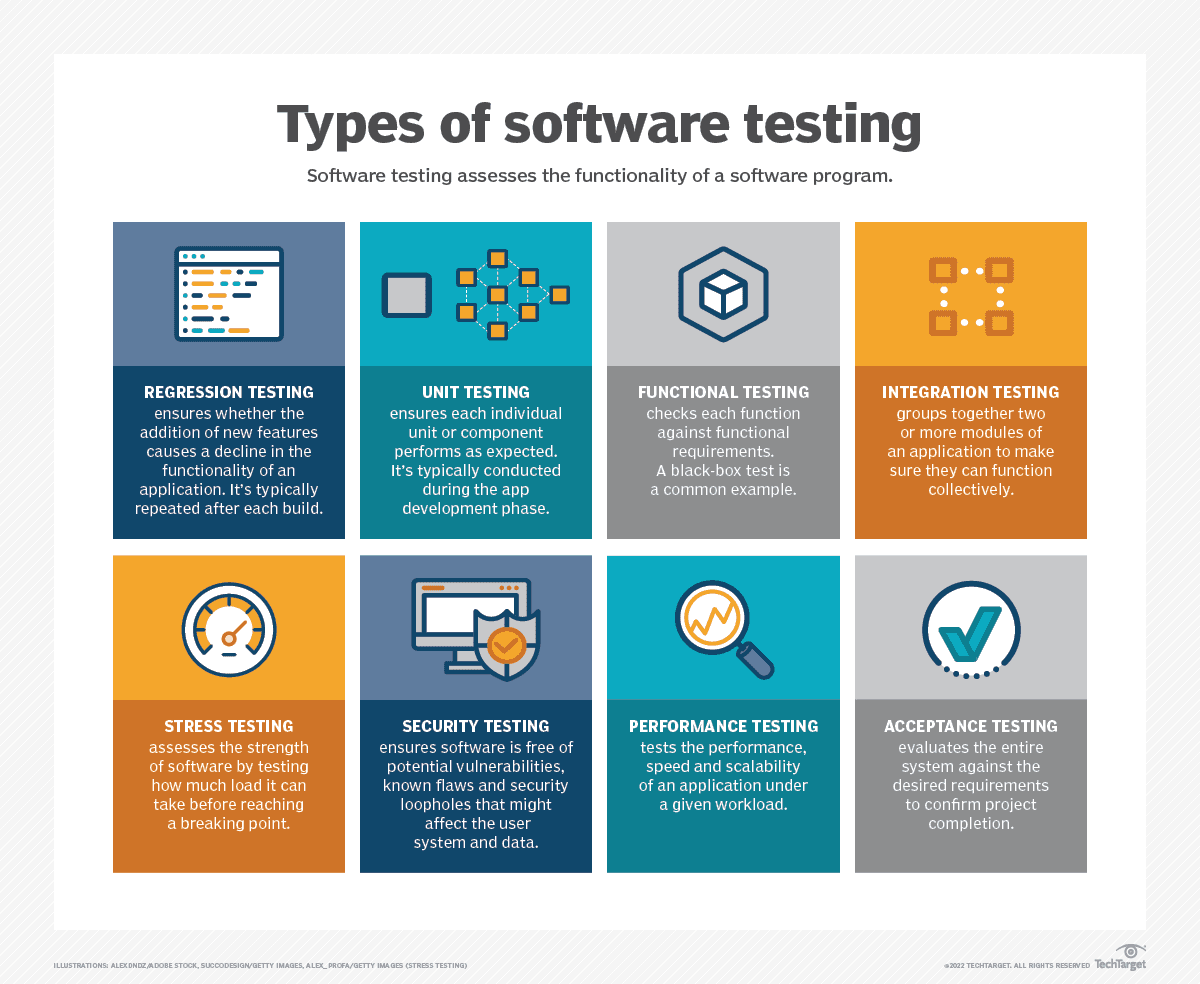
Source: Tech Target
Tests are carried out by a specific type of professionals called software testers or quality assurance (QA) experts. However, they’re not alone.
Since technical writers need to become very well acquainted with the product they’re documenting, they need to thoroughly test all of its features and use it as an end-user would.
By doing that, they’re providing an extra layer of manual testing that can help the development team catch more mistakes and smooth out the product features before the product is offered to customers.
Speaking about the similarities between testers and writers, at the 2021 Write the Docs Symposium, Ines Stefanović, Software Quality Engineer at IBM iX DACH makes the same point:
“Most companies in which tech writers work actually want their own software products described in such a way that the content is easily understandable. And to get to that point, a tech writer needs to understand the product in-depth. What better way than to test it/use it by themselves as a user would?”
By exploring the product and reporting problems during the documentation process, the work of technical writers has the added value of increasing the level of quality of the software once it hits the market and becomes available to users.
Training New Employees
When employees first join a company, they’re in a position that closely resembles that of the product’s end-users.
They need to learn about the product quickly and efficiently in order to complete various tasks.
Previously, it was the job of managers and colleagues to show new employees the ropes and onboard them.
However, changes in the workplace, such as automation and the rise of remote work, have significantly decreased the portion of training that’s done in-person, meaning employees can’t always count on supervisors and coworkers to show them how things are done.
For instance, new research shows that managers only spend an estimated 14 hours in total onboarding new hires.
Therefore, it comes as no surprise that employees feel that managers are becoming ineffective in the onboarding process.

Source: Archbee
Fortunately, this is another sensitive area where technical writers can be of great value.
Since they create materials intended to help users learn everything there is to know about the company’s product, they can also be immensely helpful to new employees who are approaching the product for the first time.
This holds true for new employees from practically any department or team. For example, let’s say you’re onboarding a new team member in the customer support department.
Instead of the manager having to sit with the employee and onboard them to the product, they can simply give them access to the software and have them learn how to use it with the help of your technical documentation.
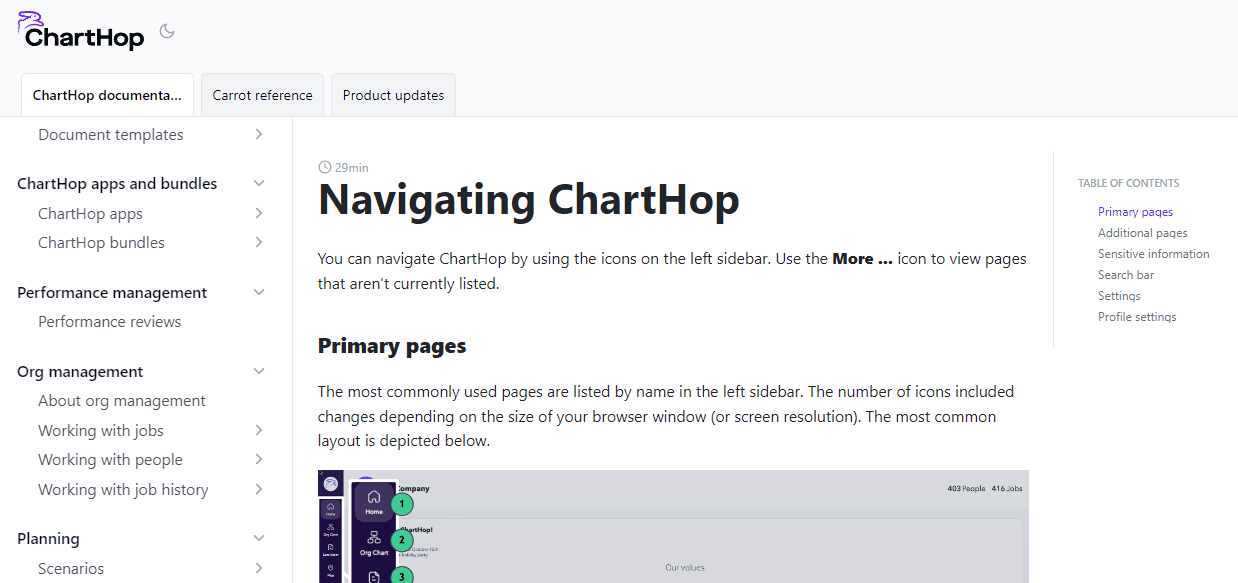
Source: docs.charthop
As the support rep starts working with customers and encounters issues, they can keep relying on the documentation to provide answers for customers instead of contacting their supervisor for every question they don’t immediately have the answer to.
Resources such as troubleshooting guides are invaluable to new employees in that regard.
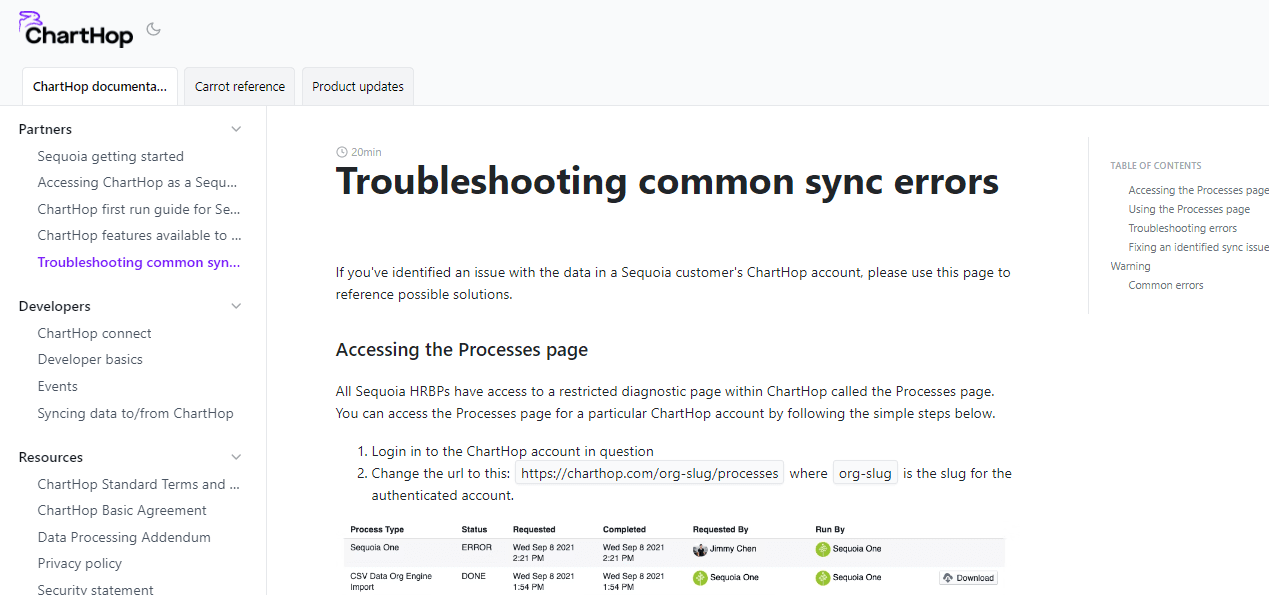
Source: docs.charthop
Ample documentation can even help new developers on the team get acquainted with the code behind the product, allowing them to become productive much faster, and with less involvement from senior developers.
In fact, new developers often feel very frustrated when they arrive at a new job and need to start working with code they simply don’t understand because it’s undocumented.

Source: Quora
However, with quality developer documentation, new developers have a much easier starting position and can learn the ropes much faster. Some resources that are of immense help include:
- Installation/Download/QuickStart guides
- Hello World tutorials
- Error codes
These documents most often contain the answers to the most common questions developers have when starting to work with new code, meaning these materials function as training resources.
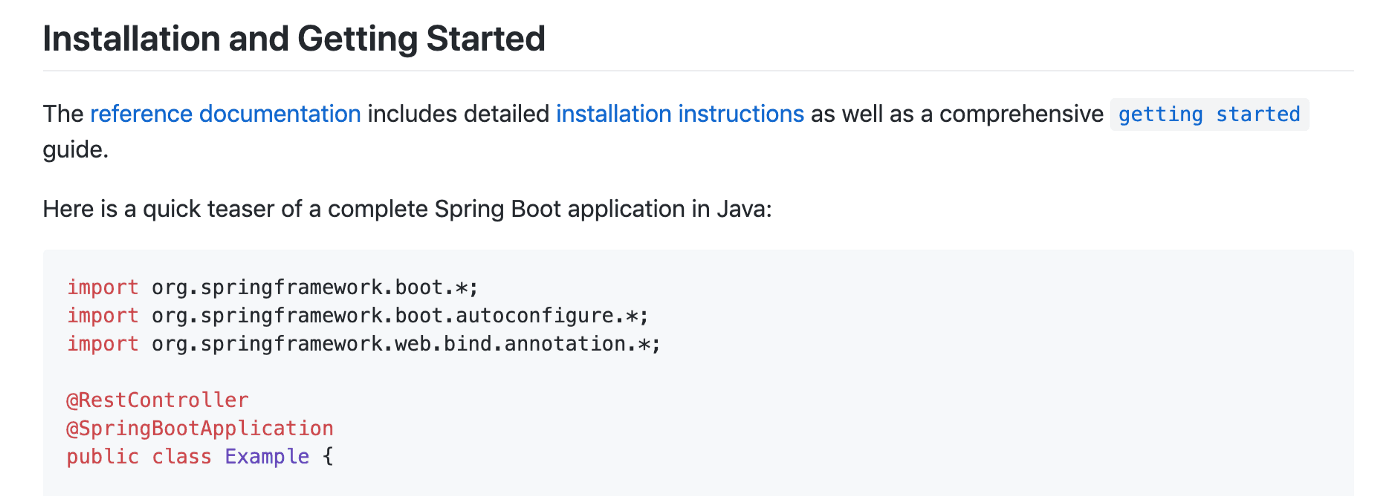
Source: Jonathan Holloway
To sum up, your technical documentation isn’t only useful to external users. It’s equally helpful to new members of your team who might not be familiar with your product yet.
That means your technical writers have a direct role in training your employees, and good training is vital to a company’s success.
Ensuring Uniformity Between Teams and Products
One of the most insidious problems a lot of modern-day businesses face is the silo mentality.
This concept denotes a situation in which departments in companies become self-contained and gradually stop communicating with each other.
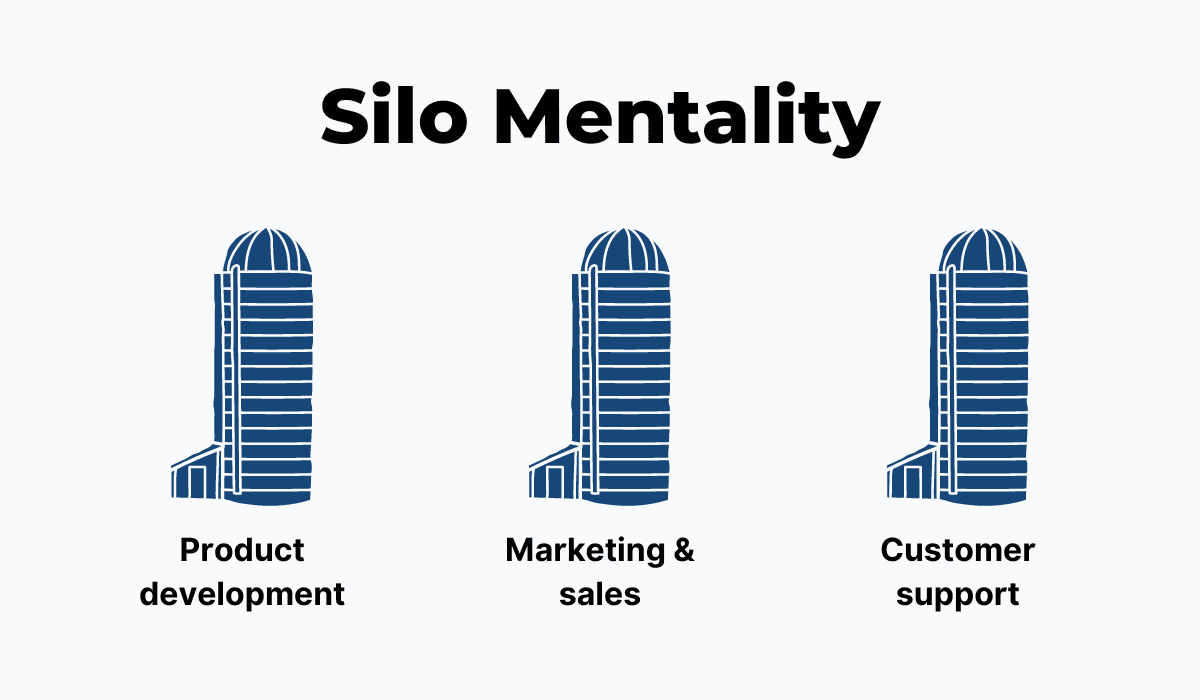
Source: Archbee
Siloing can be very harmful for the company because it stifles cooperation, pits departments against each other, and creates duplicate practices and procedures instead of a single way of doing work.
You might not think your company is in any danger of becoming siloed, but the truth is that this problem is more widespread than many would like to admit.
Today, almost half of all companies and agencies have noticed this issue in their workplace.
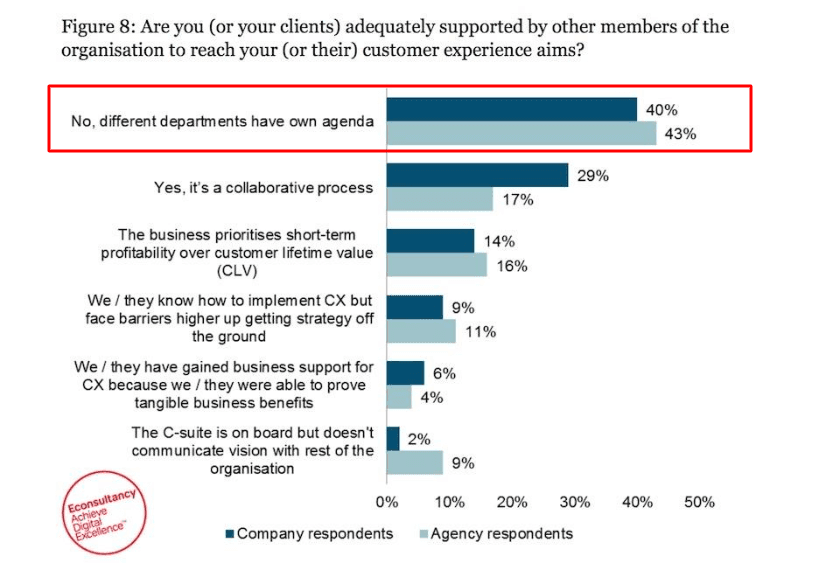
Source: My Customer
For a company to really succeed, its teams and departments need to cooperate and work as a single unit because every team makes their own contributions to the quality and value of the product.
Fortunately, technical writers can do wonders in bringing your team together and ensuring there is a single source of knowledge at the company that informs and leads the work of each individual department.
Let’s see some examples of how that works.
When working on technical documentation, technical writers can ask for input from relevant stakeholders on the project to ensure that the document contains the best possible information, gathered from the right experts at the company.
If you’re working with quality documentation software, such as Archbee, technical writers can even use the software’s collaboration features to ask for input directly in the document, as the document is being created.

Source: Archbee
In this case, the technical writer acts as a mediator between teams and collects vital knowledge from experts to ensure there is agreement between departments on how a feature should work to satisfy users.
And thus, uniformity for the product is achieved through documentation.
Another example can be found in the way technical writers work with subject matter experts (SMEs) to create technical documentation.
It’s standard practice for writers to conduct interviews with SMEs where they collect knowledge such as:
- What needs of users are addressed by the product
- What prerequisites users need to have to use the product
- How the product works
- What are some of the known issues that arise working with the product
As technical writers talk to the experts, they may note that different experts have different opinions about some of the aspects of the project, that they understand their users differently, or that they envision different goals for the product.
When that happens, technical writers can flag these issues as inconsistencies between departments and bring them to the attention of department heads.
Once these problems are highlighted, departments can start working on restoring consensus between teams.
That’s just one example of how technical writers can help ensure uniformity between departments.
Long story short, technical writers act as liaisons between departments, ensuring uniformity which is another important element to a company’s success.
Marketing the Product
Recent marketing research has given businesses some very interesting points to consider.
According to new data, people are getting fed up with direct sales methods and targeted advertising.

Source: Archbee
The new trend is that people want to research products on their own and become well informed before they make a purchasing decision.
That means they ignore salespeople and ads, and instead read customer reviews and product documentation to form an opinion on whether or not a product is the right fit for them.
There’s research to support this.
One study has shown that consumers find documentation much more helpful than advertising materials and even social media when deciding to buy a product.

Source: D2 Worldwide
Since these resources are created by technical writers, it’s safe to say that having a technical writer on your team can have the added business benefit of supporting your marketing efforts.
So, what kinds of materials in your product documentation are helpful to users who are looking to buy your kind of product?
Well, they are the parts of your documentation that detail what the product does and what the user experience is like, such as:
- Product descriptions that tell them that the product was developed to address exactly the needs they have.
- User manuals that show them that using the product is easy, safe, and comfortable.
- Resources such as integration lists that explain how the product can be used with other software they already use.
- Troubleshooting guides and FAQs that detail solutions to problems they’ve faced with software in the past.
All of this knowledge proves to the potential customer that this product will satisfy their needs, and integrate seamlessly into their life, without taking too long to learn.
For example, a customer who’s considering investing in Automate.io (pictured below), the work automation software, will be happy to know that the app integrates easily with Slack and Trello, which they already use in their work.
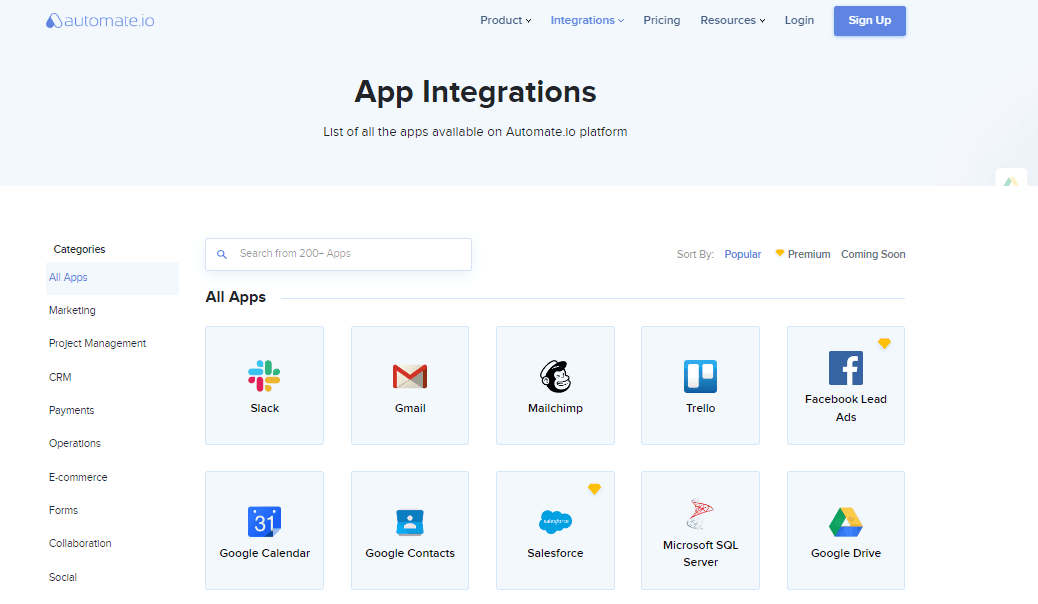
Source: Automate.io
There can be no success without an effective marketing strategy. And these days, companies need to rely on much more than ads to attract customers.
Since quality documentation can act as a marketing resource, technical writers with good storytelling skills can be an incredibly valuable asset to a company.
Providing Materials for Customer Support
Marketing isn’t the only area in which consumers are asking for more independence.
Customer support is experiencing a similar shift towards self-service resources that don’t require the involvement of human agents (except for the technical writer, of course.)
And if you think about it, that makes sense. Traditional modes of customer service require users to wait so they can be served.
No matter if the customer support agent is interacting with them via phone, chat, or email, resolving an issue is seldom quick.
However, when users have materials available that guide them through solving their own problems with the product, matters are settled very quickly.
That explains why today’s customers prefer to use documentation to fix issues, instead of contacting support reps.
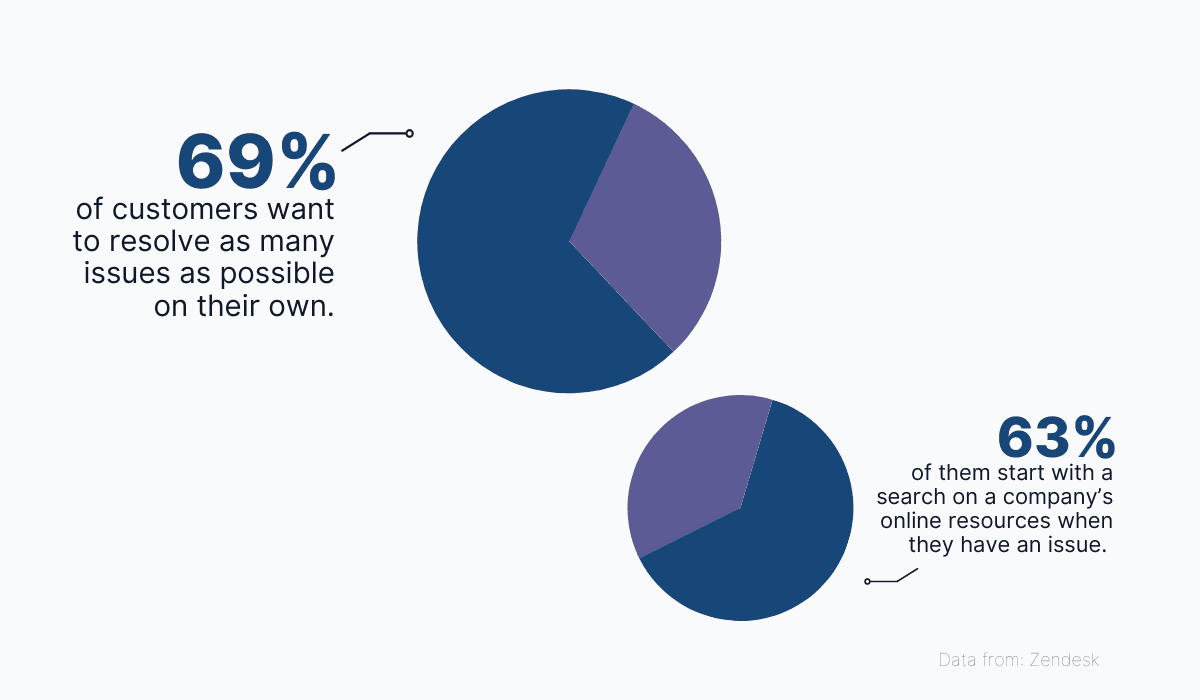
Source: Archbee
The parts of your documentation that are most valuable to users experiencing issues are your troubleshooting guides, FAQ sections, and error codes (in the case of developer documentation).
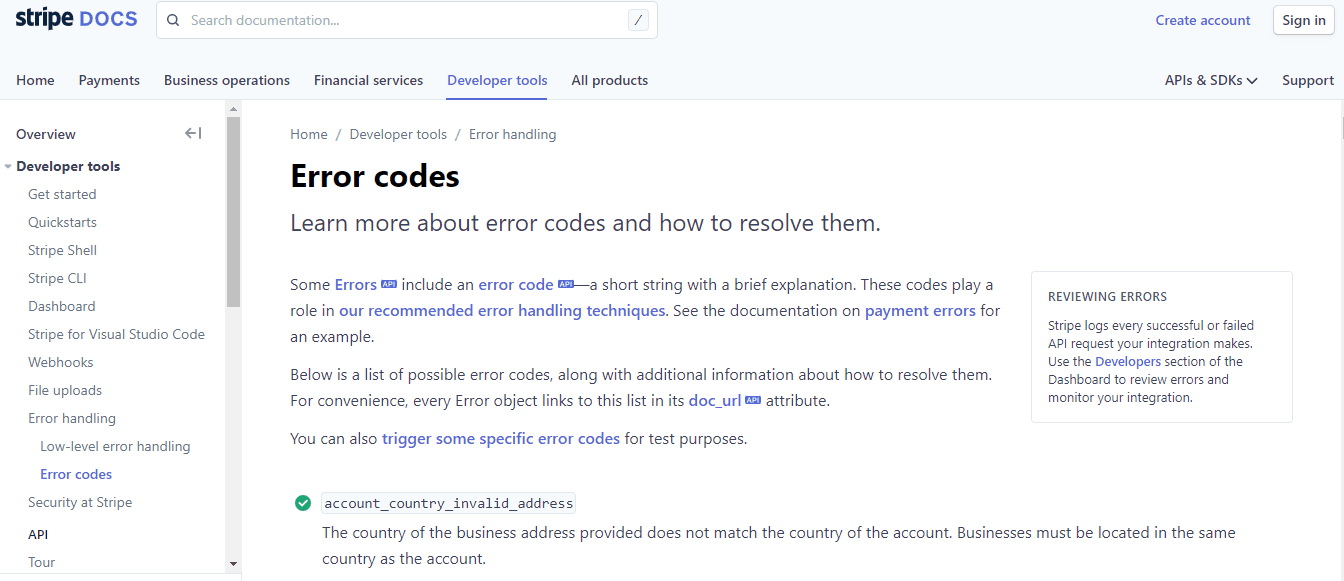
Source: Stripe
Therefore, if your users are indeed accessing your technical documentation before they decide to contact customer support, as we’ve seen they do, that means that your technical writers are resolving issues even before they become support tickets.
In this way, your technical writers are instrumental in reducing your customer support team’s workload.
And since customers with bigger issues now have an easier time reaching your customer support team, the satisfaction rate with customer support is also going up.
But wait, there’s more!
A customer support rep can only deal with one issue at a time.
That means that each time a user has an issue that needs their attention, a cost is incurred in the form of time and resources spent on resolving said issue.
However, once a customer support document is written and published to your knowledge base, it can help an infinite number of customers all at once, at no additional cost.
Comparing these two methods, we can easily come to the conclusion that solving a support ticket with a document is much cheaper than any other way.
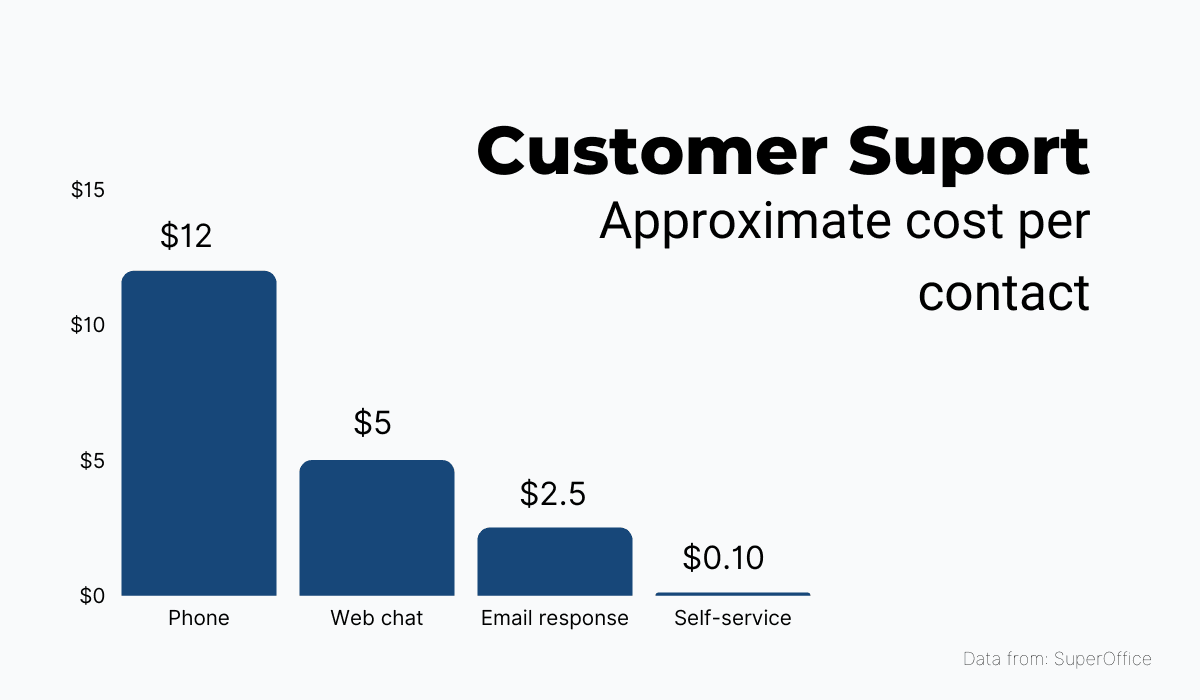
Source: Archbee
So, on top of helping you deliver stellar customer support, your technical writers can also save you a lot of money.
This is just another example of how technical writers can have a very meaningful role in helping your company achieve success.
Conclusion
In this article, we’ve shown you some (but not all) of the benefits your technical writer can bring to every aspect of your business.
We’ve talked about how technical writers can help you test your products, train new employees, ensure harmony across all departments, and elevate your marketing and customer support efforts.
All of these improvements, when put together, play a far-reaching role in helping your company grow and achieve success every day.
Try Archbee's full range of features with our free 14-day trial.
Frequently Asked Questions
A great technical writer turns complex products into clear, usable experiences that move the business forward. Their impact shows up across the customer and employee lifecycle:
- Higher product quality: Acting as power users, they surface usability gaps, unclear copy, and edge cases; write reproducible bug reports; and ensure UI behavior matches what the docs promise.
- Faster onboarding and training: They create quick starts, role playbooks, and process guides so new hires can self-serve and ramp quickly.
- One source of truth: Writers standardize terminology and procedures, reducing silos and inconsistencies across teams and products.
- Marketing and sales enablement: Buyer-ready docs, tutorials, and integration guides help prospects self-educate, improve SEO, and shorten sales cycles.
- Lower support costs: Knowledge bases, troubleshooting guides, and FAQs deflect tickets and speed up resolutions.
- Risk and compliance: Accurate, versioned instructions reduce misuse, support audits, and minimize recall and regulatory risk.
Expected outcomes: faster time-to-value, fewer escalations, more consistent experiences, higher customer satisfaction, and happier teams.
